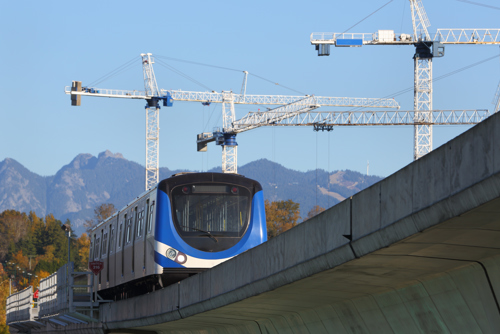Vancouver. It’s one of the most liveable large cities in the world, consistently ranked among the top worldwide metropolitan areas for quality of life. (It was even named the best city in North America, and third best globally, back in 2019.) With a population featuring over 200 ethnic groups, it’s a hub of diverse foods, cultures, traditions and languages packed among the city’s strikingly abundant steel-and-glass high-rises, green parks and public spaces. That said, Vancouver offers both urbanites and outdoorsy types plenty to do and see. Tucked between miles of beach-studded coastline and mountain ranges, the city is also surrounded by ancient forests and a seawall that residents and visitors flock to all year long. If you’re thinking about taking a trip to the Great White North or moving to Vancouver (as a Canadian native or expat alike), read on to learn all about the city, including the cost of living, best restaurants, job market and fun things to do.
1. Living in Vancouver: An Overview
Vancouver is sometimes called a “city of neighbourhoods,” and is often thought of as having no singular or cohesive cosmopolitan identity. Traveling through the city can feel like you’re passing between many different cities, and there are distinct areas — such as Chinatown (one of the largest in the world), Little Italy, Greektown and Punjabi Market — that present some of the city’s diversity in its full splendor and array, with incredible food scenes, markets and more.
There’s also plenty to explore outside of the city while you’re here, and living in or visiting Vancouver is an excellent opportunity to wear your explorer’s hat. During the warm summer months, you can hike, kayak, swim and camp, while the winter months are prime time to bring your skiing and/or snowboarding gear to the mountains.
Located on the west coast of Canada, Vancouver is 50 kilometres (31 miles) north of the U.S. border and just a three-to-four-hour’s drive from Seattle, Washington. Part of British Columbia (B.C.), Canada’s westernmost province, the city spans 114 square kilometres (44 square miles), making it the largest city in B.C. and the third-largest city in Canada, after Toronto and Montreal.
Here are some basic facts about Vancouver, according to the latest census in 2016:
-
Population: 631,486
- Diversity: European Canadian (46.2 percent), Chinese (27.7 percent), South Asian (six percent), Filipino (six percent), Southeast Asian (three percent), Japanese (1.7 percent), Latin American (1.6 percent), Black (one percent)
- Median age: 39.9
- Median income: $65,327
-
Weather: mild year-round with rainy and snowy winters
- Best time to visit: mid-June to mid-September to experience the best temperatures and least amount of rain
- Cool season: October to May
- January is the coldest month; August is the hottest month
Population
Of the 2.4 million residents in the greater Vancouver area, the city of Vancouver makes up about 26 percent of the total count, at 631,486 people (according to the last census count in 2016). This is a 4.6 percent growth since 2011. Since the 1980s, increased immigration has turned this seaport into an ethnically diverse city, where more than half of the population speaks a language other than English as their mother tongue. The most populous ethnic groups after European Canadians include Chinese immigrants (27.7 percent), many of whom arrived from Hong Kong in the 1990s; South Asians (six percent); Filipinos (six percent); and Vietnamese, Indonesian and Cambodian diasporas (three percent). Though the census doesn’t ask questions about sexual orientation or identity, Vancouver is also home to queer-friendly spaces, particularly in Davie Village, located in the city’s West End.
Weather
Vancouver has plenty of nicknames about its climate: the Wet Coast, Raincouver, Rain City. The truth is that it boasts a pleasantly temperate climate, similar to Seattle’s. In fact, one of the best perks of living in the city is that it’s never too hot, too cold or too humid, and many residents don’t even own an air conditioner.
In Vancouver, the summer months of July, August and September are warm, sunny and comfortable, with few days of rain (highs of 73 degrees Fahrenheit and lows of 58 in August, the hottest month), while winters are cold and rainy (highs of 42 and lows of 35 in January, the coldest month).
You may be wondering, “Does it snow in Vancouver?” The answer is yes, though not often — and when it does snow, it’s usually in January or February. The cold arctic air that sweeps over Canada is typically blocked by the Rockies before it can reach the city.
2. What’s the Cost of Living in Vancouver?
There’s no way to sugarcoat it: Vancouver is expensive, and the cost of renting or buying can put a strain on your wallet. In 2020, an international survey ranked cities in eight countries by housing affordability, dividing the median house price by the median household income. Vancouver was listed as the second most expensive city to live in (and the most expensive in Canada and the entire Western hemisphere), beaten only by Hong Kong.
The average sale price of a house in the city is currently $1.3M, with a median of $895K. This is 2.8 percent lower than last year’s numbers — the once “red-hot” housing market has cooled over the past few years due to climbing interest rates and tighter federal rules on who qualifies for a mortgage.
-
Housing: $1,300,000 CAD average sale price ($1,004,373.15 USD)
-
Average number of days on the market: 26
-
Rent (one-bedroom): $2,150 CAD per month for a one-bedroom apartment ($1,703.12 USD)
-
Utilities: $94.72 CAD per month ($74.89 USD)
-
Groceries: 6.44 percent higher than Toronto, 1.59 percent higher than Montreal, 25.14 percent lower than San Francisco
-
Gas: $1.56 CAD per litre (roughly $5.90 USD per gallon)
-
Transportation: $2.45 CAD to $4.60 CAD, depending on the number of zones traveled on TransLink system
How Expensive Is Renting in Vancouver?
With such a pricey housing market, many residents choose to rent rather than buy. While 70 percent of greater B.C. residents own their own home, only 48 percent of people in Vancouver make the same commitment. That said, the average rental price of a one-bedroom apartment in the city is CA$2,150 per month (eight percent higher than last year), so you may need to find a roommate or convert your living room into an additional sleeping area, depending on your budget. We also recommend looking on Craigslist and Facebook or asking around in your network to find the best apartment deals.
-
Most expensive neighborhoods:
Downtown, Fairview, Cambie, Oakridge -
Least expensive neighborhoods:
Sunset, Kerrisdale, Marpole, Hastings-Sunrise, Arbutus
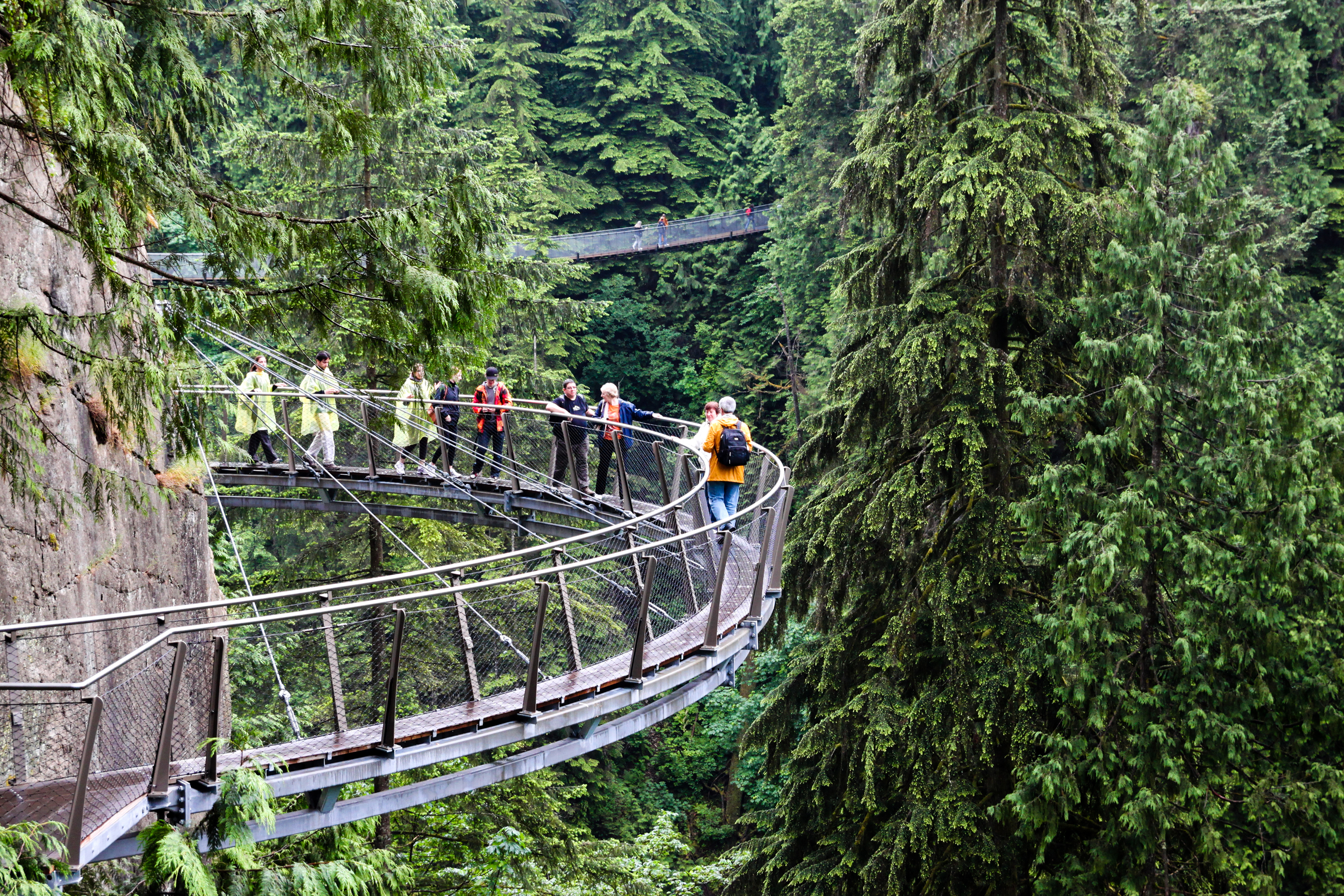
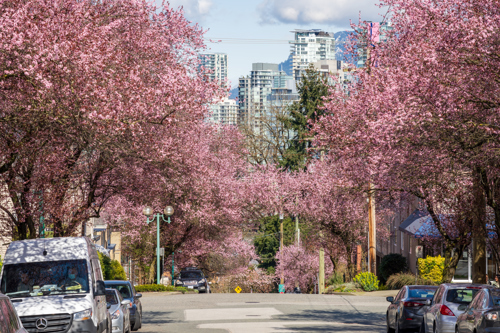
3. The Best Neighborhoods in the Vancouver
While there’s a bit of disagreement among locals as to the exact names and boundaries, Vancouver is divided into 22 neighborhoods. Whether you’re a young professional, newlywed couple, parent, artist or recent college grad, we’ll walk you through a few of the best neighbourhoods to meet your needs and budget.
- Downtown
- West End
- Kitsilano
- Kerrisdale
- Fairview/South Granville
- Marpole
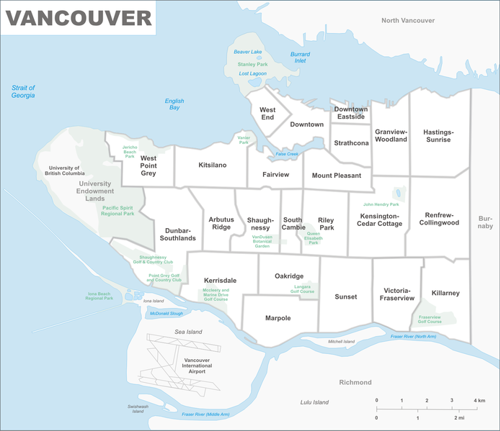
Downtown
Downtown is the central business district of Vancouver, with office buildings and high-rise apartment complexes galore. If you have the budget and find yourself at home among the big-city bustle, Downtown is a great option. Plus, it’s packed with entertainment venues and restaurants and is in close proximity to the main shopping district along Robson Street and Pacific Centre Mall.
-
Population: 100,600
-
Average household income: CA$72,722 ($57,367.12)
-
Cost of living: $1M median house price, $1,722 median rent
-
Places to check out: Robson Square, food trucks at Vancouver Art Gallery plaza, boutiques and luxury stores in Gastown, Chinatown (Dr. Sun Yat-sen Classical Chinese Garden), urban spas in Yaletown
West End
The West End, located on the east side of Downtown, is a beautiful, inclusive and more affordable part of the Downtown area, with a diverse Canadian and immigrant population, queer-friendly spaces and immediate access to the ocean and Stanley Park.
-
Population: 47,200
-
Average household income: CA$60,847 ($47,999.46)
-
Cost of living: CA$715K average house price ($564,031.36), CA$2,050 median rent ($1,617.15)
-
Places to check out: Stanley Park, Seawall, dining and nightlife along Denson Street and Davies Street, English Bay Beach, Sunset Beach, Barclay Heritage Square
Kitsilano
Located along the south end of English Bay, Kitsilano (also known as “Kits”) is a West Side city full of students and young families. If you love the beach, you’ll have a great time in Kits — it’s where two of the city’s most popular shorelines are located (Kits Beach and Jericho Beach) with fantastic views of Downtown and the North Shore Mountains as well. Summers in Kitsilano are vibrant and dynamic, with residents and visitors making their way to the beaches, yoga studios, organic markets and more.
-
Population: 43,045
-
Average household income: CA$104,508 ($82390.65)
- Cost of living: CA$1.2M average house price ($946,040.28), CA$1,890 median rent ($1,490)
-
Places to check out: Vanier Park, Museum of Vancouver, Margaret Pigott Park, Kits Beach, Jericho Beach, Kitsilano Vancouver Market, food strip along West Broadway
Kerrisdale
This residential neighborhood is located south of Kitsilano, and is home to many affluent, retired couples who seek a slower pace, quaint shops and high-rise condos. That said, many students at the nearby University of British Columbia (UBC) find their way to Kerrisdale for its surprising number of affordable apartments and proximity to campus.
-
Population: 13,975
-
Average household income: CA$103,433 ($81,543)
-
Cost of living: CA$2M average house price ($1,576,733.80), CA$1,600 median rent ($1,261.39)
-
Places to check out: VanDusen Botanical Garden, Queen Elizabeth Park, Kerrisdale Village (the main shopping area)
Fairview/South Granville
Located right across False Creek from Downtown, Fairview (which includes the South Granville shopping district) features a great selection of bars, restaurants and access to city hotspots via public transportation, but without the high cost of living in Downtown itself. Plus, it’s a quick walk to Granville Island, which boasts an array of scenic views, gorgeous streetscapes, and waterfront theatres, galleries, and markets. It’s also the location of the Vancouver General Hospital and other health institutions, making it a perfect place to live for medical professionals.
-
Population: 33,620
-
Median household income: CA$82,097 ($64,722.56)
-
Cost of living: CA$924K average house price ($728,451), CA$1,950 median rent ($1,537.32)
-
Places to check out: Granville Island, Aquabus, Bloedel Conservatory, South Granville shopping district
Marpole
Located on the south side of Vancouver, near Mitchell Island, Marpole features affordable apartments and spacious houses away from the activity of Downtown and its adjacent neighbourhoods. This is the perfect spot for families looking to settle down into larger homes with gardens, patios and plenty of square footage — without the noise and density of Vancouver’s more urban areas.
-
Population: 24,460
-
Median household income: CA$52,112 ($41,083.38)
-
Cost of living: CA$1.4M average house price ($728,451), CA$1,650 median rent ($1300.81)
-
Places to check out: Marpole Midden National Historic Site of Canada, Ash Park, Winona Park, Metro Theatre, The Antique Warehouse
4. What Are the Best Secondary Schools in Vancouver?
Public schools in Vancouver are generally good, and free for residents, expats who are permanent residents and individuals who are living in Canada on a work visa. For those who live outside of Canada and are thinking about moving to Vancouver, the school system has two levels: elementary (junior kindergarten to seventh grade) and secondary (eighth grade to twelfth grade). Like in the U.S., your child’s school placement depends on where you live. Here are some of the top Vancouver city secondary schools based on the Fraser Institute’s review of the top schools in British Columbia:
- York House — private girls’ school for grades K-12
- Vancouver College — private boys’ school for grades K-12
- West Point Grey — co-ed private school for grades K-12
- University-Hill — public co-ed secondary school located just outside of the city limits of west Vancouver
- Lord Byng — public co-ed secondary school located in the West Point Grey neighbourhood of Vancouver
5. The Job Market in Vancouver, Canada
Vancouver is known as “Hollywood North” because the city is home to the third-largest film and TV production industry after Los Angeles and New York City. That said, Vancouver’s bustling job market is made up of professionals in many industries, including sales, business, management and others. Here’s a breakdown of the top workforce sectors:
- Sales and service occupations — 24.35%
- Business, finance and administration occupations — 15.95%
- Management occupations — 12.04%
- Occupations in education, law and social, community and government services — 12.45%
- Natural and applied sciences and related occupations — 8.85%
Here are some places you can find open positions in Vancouver:
- Find Vancouver jobs on Indeed
- Find Vancouver jobs through BCjobs
- Find Vancouver jobs through the City of Vancouver portal
- Find Vancouver jobs through CalOpps
- Find Vancouver jobs through WorkBC
- Find Vancouver jobs through Glassdoor
- Find Vancouver jobs through LinkedIn
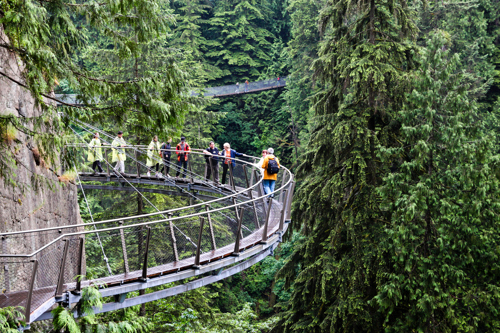
6. The Best Things to Do in Vancouver
Vancouver is teeming with activities including nature-immersed experiences, public gardens and parks in city centers, as well as an exciting, diverse culinary scene that brings the best out of the area’s seasonal produce and seafood.
Outdoor Activities
- Coal Harbour Seawall. Soak in some spectacular Vancouver sights, architecture and history with a walk along the Coal Harbour Seawall, a 5.77-kilometre (3.5-mile) circular stroll that offers views of Stanley Park, North Vancouver, the North Shore Mountains and more. (FREE)
- Dr. Sun Yat-sen Classical Chinese Garden. Vancouver’s Chinatown is the largest in Canada and one of the largest in the world, due in part to an influx of Chinese immigrants in the 1990s (though it was established more than 100 years earlier). Nestled in Chinatown is Dr. Sun Yat-sen Classical Chinese Garden, which features a walkable garden as well as exhibitions, events and more. Wander through Chinatown for fantastic food, shops and drinks after. ($16 PER ADULT)
- VanDusen Botanical Garden. This 22-hectare (55-acre) botanical garden is a peaceful oasis in the city, with more than 7,500 plants from around the world and an Elizabethan hedge maze (one of six in North America). There are also plenty of events to learn more about the plants and animal species in the garden, including bird walks, medicine wheel ceremonies, guest speakers and more. ($8.40+ PER ADULT, depending on the time of year)
Parks & Attractions
- Capilano Suspension Bridge. Located in Capilano Suspension Bridge Park, the famous Capilano Suspension Bridge stretches 137 metres (450 feet) across and 70 metres (230 feet) above Capilano River, flanked by beautiful forest canopies. While you’re here, check out the Cliffwalk and Treetops Adventure for more experiences that give you a “squirrel’s-eye view.” ($54.95 PER ADULT)
- Stanley Park. Stanley Park is one of the crown jewels of Vancouver, offering 405 hectares (1,000 acres) of public green space bounded by the Burrard Inlet and English Bay. Go there on a summer day and you’ll see bikers, rollerbladers, pedestrians and more enjoying the sun, forest trails, seawall and more. (FREE)
- Granville Island. From vendors, butchers and farmers to live performances, waterfront dining, breweries, art, festivals, boating and more, Granville Island is a popular destination with plenty of things to do for locals and residents alike. You can walk, bus or drive to Granville Island from the city, but taking the Aquabus will only set you back $4.50 and give you an unbeatable experience. ($4.50 PER PERSON, round trip)
Best Places to Eat
- Vij’s (@eatdrinkvijs). This famous culinary spot pairs traditional Indian spices and techniques with sustainable, local produce from British Columbia to create a dining experience that’s routinely been ranked on Vancouver’s “best restaurants” lists. Try the vegetable pakoras, B.C. ruby trout in coconut and fenugreek, and tamarind chicken with sprouts. (GLUTEN-FREE + VEGAN OPTIONS)
- Kissa Tanto (@kissatanto). This Japanese-Italian fusion restaurant located in Chinatown is the epitome of elegance, innovation and delicious eats. Start off with oysters with daikon chili and tomato wakame granita, spelt seafood udon and organic chicken with shio koji dipping sauce.
- The Acorn (@acornvancouver). Led by head chef Devon Latte, The Acorn is best known for its multi-course plant-based tasting menu that celebrates seasonal, local produce at their peak. For $64 per person, you can let the chef dazzle you with a customized, ever-rotating selection of dishes, or pick from the menu. Try the confit chicken of the woods mushroom with breadcrumbs and blue cheese, roasted kohlrabi and German butter potato. (GLUTEN-FREE + VEGAN OPTIONS)
- Phnom Penh (@phnompenh.restaurant). This Cambodian spot in Chinatown features fresh, explosive flavors and dishes that earned it the Best Southeast Asian Restaurant Award. Its beef soup, crispy pomfret fish, stir-fried rice cake and black pepper squid are all worth experiencing.
7. Transportation
Vancouver’s TransLink system can get you to most places and destinations in the city, so it’s possible not to own a car (or rent one, if you’re stopping by for a quick trip). In fact, 29.7 percent of Vancouver’s population relies on public transportation for their daily commute, and 13.67 percent can even walk to work. The bus routes and SkyTrain (light rail) operate as early as 5 a.m. and as late as 1 a.m., depending on the day. Fares are based on the number of zones you travel through, and start at CA$3.05 for adults (CA$2.45 if you have a Compass Card).
8. Planning Your Move
Planning your move to Vancouver can be stressful, so we’ve put together some helpful guides to help you plan your move, find storage and more.
- Essential Tips for Packing and Moving While You Sell Your Old House
- Tips on Staging a Home for a Quick Sale
- The Essential Guide To Selling on Craigslist and Facebook Marketplace
Be sure to download our checklists, too:


